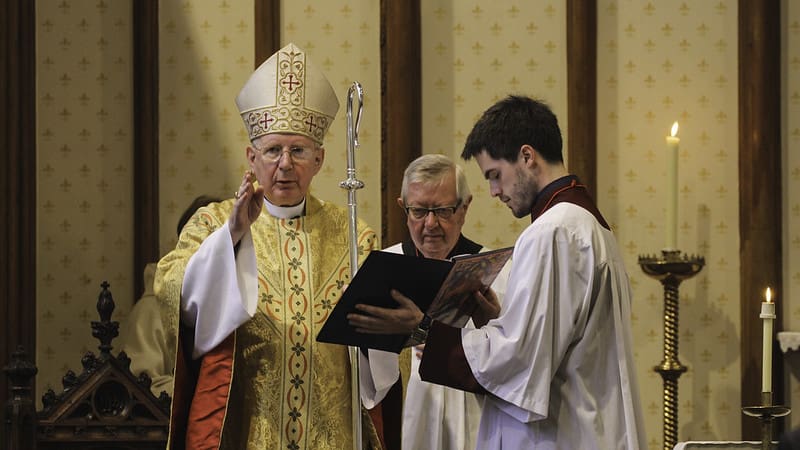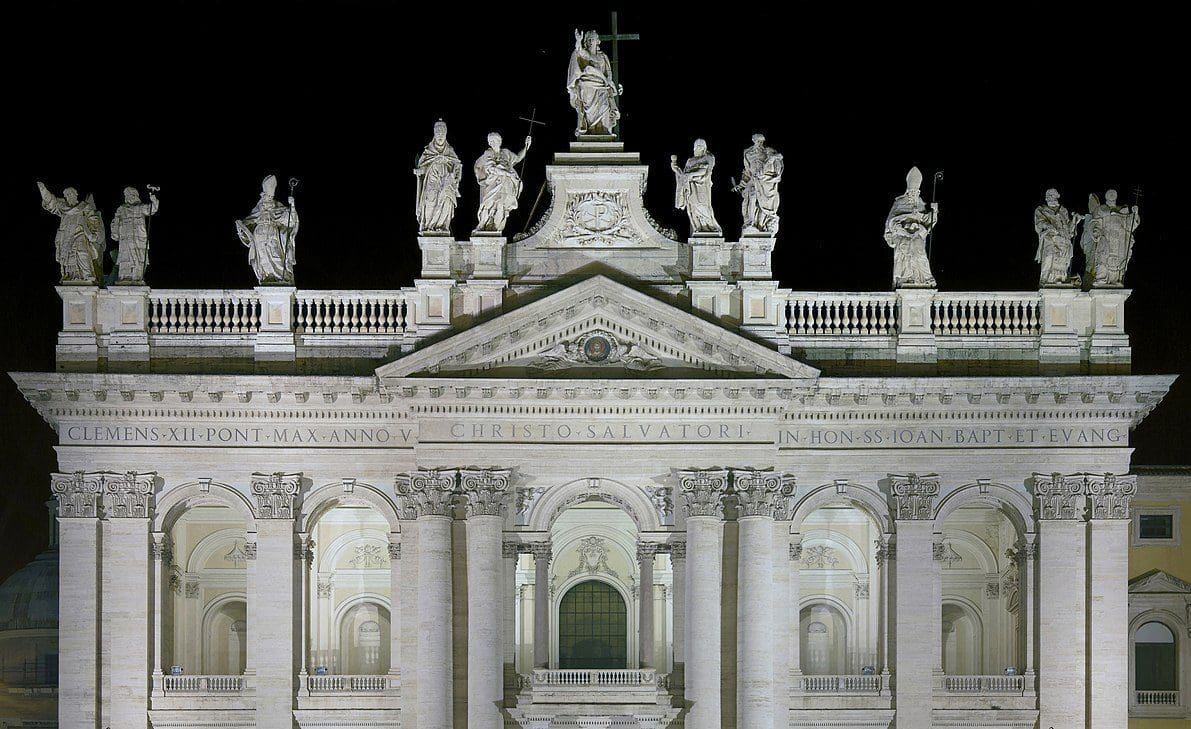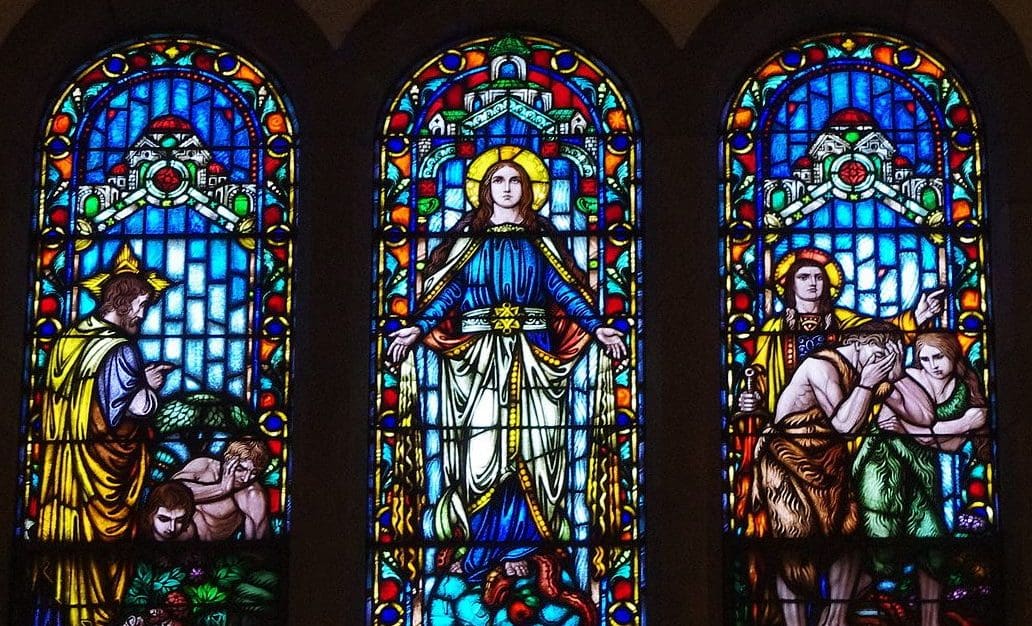The concluding rites of Mass consist of the blessing and dismissal. At times, announcements might also precede the blessing. After reverencing the altar (and at times the Blessed Sacrament reserved in the sanctuary), the celebrant and ministers process to the sacristy. Again, the traditional practice of the Roman rite can help structure these inter-related movements, gestures, and postures in a coherent way.
Announcements
Following the Prayer after Communion, there may be some announcements. If the celebrant is standing at the altar for the post-communion prayer, it is better for him to step away from the altar at its side to make these announcements. It is unseemly to address mundane matters while standing in the place of the Eucharistic sacrifice. Similarly, it is best to avoid making these announcements from the ambo since this is reserved for the proclamation of God’s word.
Perhaps, more appropriately, another person, rather than the celebrant, might make announcements to the faithful at a lectern. Or, if this practice is expected to be a regular occurrence, it may be advisable to conclude Mass, especially on Sundays, consistently at the chair. The celebrant or the deacon can easily make announcements from that location. (See Andre Mutel and Peter Freeman, Ceremonial de la Sainte Messe, Editions Artege, 2012, 177-178.)
Final Blessing
For the final blessing, the priest stands at the chair or at the altar, and extends and then joins his hands toward the assembly, saying “The Lord be with you.” He blesses the assembly with his right hand. He holds the fingers of his right hand together with the hand fully extended, pointing upwards. He makes the sign of the cross in the shape of a Greek cross (a plus sign (“+”) rather than the traditional lowercase “t” cross) over the people, at the height of his face and within the width of his shoulders. During this time, his left hand rests on his chest (cf. Ceremonial for Bishops, 108). When giving the blessing at the altar while facing the assembly, the traditional practice instructs the celebrant to lay his left hand on the altar while blessing with his right. (When facing liturgical east, the celebrant turns to face the assembly to greet them and impart the blessing. The deacon remains facing the celebrant to receive the blessing. See A. Fortescue, J.B. O’Connell, A. Reid, The Ceremonies of the Roman Rite Described, Bloomsbury, 2009, 141-142.) All present bow slightly to receive the blessing (Mutel and Freeman, Ceremonies, 41). Concelebrants make the sign of the cross on themselves like all the faithful.
In the case where the celebrant will impart the solemn blessing or the blessing over the people, he extends and joins his hands to say, “The Lord be with you.” The deacon, with hands joined and facing the assembly, invites them to bow their heads, saying or singing, “Bow down for the blessing.” (If necessary, the deacon then turns from facing the assembly to facing toward the celebrant once again for the invocations and blessing.) All bow their heads slightly for the duration of the invocations and the blessing. The priest extends his arms with the palms of his hands in the direction of the people, fingers joined for the invocation(s) prior to the blessing itself. The celebrant imparts the blessing, with its alternative formula, in the manner described above.
Dismissal
The celebrant and deacon join their hands before them during the dismissal. The deacon (or the celebrant) faces the assembly to dismiss them using one of the four options provided in the missal. (When facing liturgical east, the celebrant remains turned toward the assembly after the blessing, and the deacon turns to face the assembly to dismiss them.) At the chair, after the response to the dismissal, the server returns the missal to its stand. At the altar, at the conclusion of the dismissal, having finished with the missal, the celebrant may close it with his right hand, his left hand resting on the altar or steadying the book.
Concluding Procession
After the dismissal, the celebrant goes to the altar if he has been at the chair. At the altar, he places both hands flat on the altar and silently kisses the altar with his lips closed, as at the beginning of Mass. The deacon, standing to the celebrant’s right, also silently kisses the altar with his lips closed. Traditionally, the deacon kept his hands joined without placing them on the altar (Fortescue, O’Connell, and Reid, Ceremonies, 141). Having kissed the altar, both the celebrant and the deacon turn to their right and go to the steps of the sanctuary. There they genuflect to the tabernacle if it is in the sanctuary, or simply bow profoundly to the altar if the Blessed Sacrament is reserved outside the sanctuary. Since the deacon will walk to the priest’s right at the end of Mass, it is perhaps more convenient for him to be standing and genuflecting on the left-hand side of the celebrant as they face the altar. Then both the celebrant and the deacon turn toward each other to process out side by side.
The procession at the end of Mass is conducted in the same way as the entrance procession. If cross and candles are used, the three servers walk together in a line with other servers behind them two by two. If there is an odd number of servers, the final server walks last between the two lines of servers. The Gospel book and the thurible are not carried out (Mutel and Freeman, Ceremonies, 209). Upon arriving at the sacristy or at the location where the procession will end (as in the rear vestibule of the church), it is customary for the servers carrying the cross and candles to turn around to face the celebrant. The two lines of servers stand in two lines facing each other. First, they turn slightly and bow to the processional cross with the celebrant. Then they turn slightly toward him and bow to him. Afterward the celebrant may remove his chasuble (and stole) in order to greet the faithful and then make his thanksgiving (Mutel and Freeman, Ceremonies, 181-182).
The next post returns us to the beginning of Mass by examining the optional sprinkling rite, known as the Asperges rite. Reserved to the principle Sunday Mass in the Extraordinary Form, it can be celebrated at any Mass in the Ordinary Form on Sunday and on those anticipated on Saturday evening in the postconciliar missal. Here too, the traditional practice of the Roman rite sheds light on how this remembrance of baptism can be carried out in a graceful way.



